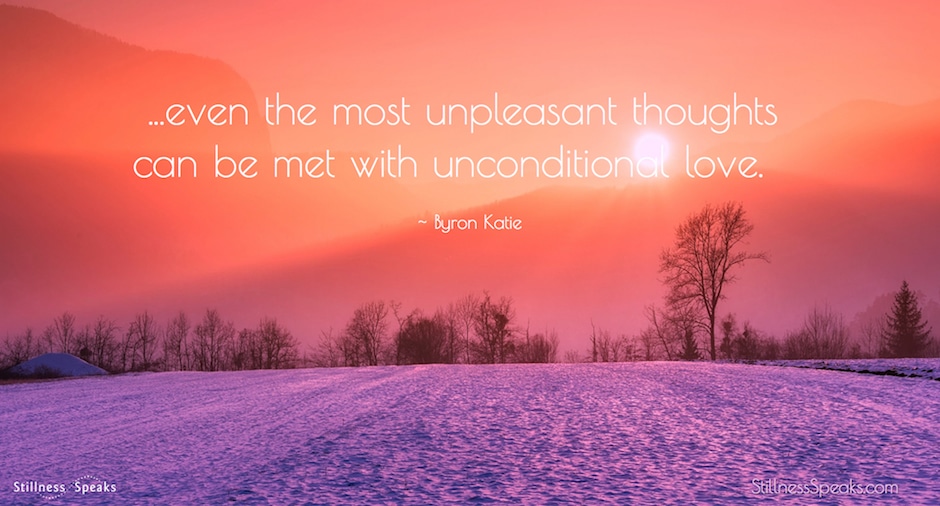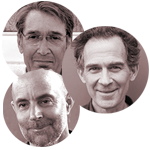…even the most unpleasant thoughts can be met with unconditional love. ~ Byron Katie
We are concluding our introduction to The Work, Byron Katie’s practical process of personal inquiry. The booklet, The Work of Byron Katie is available as a FREE PDF download, courtesy of Free Spiritual Ebooks. Text taken directly from the booklet is in italics.
Our earlier posts have introduced The Work of Byron Katie… including accepting what is, staying in your own business, and meeting your thoughts with understanding; all aiming to help you find peace within yourself and the world.
This post puts you to work. Katie talks about how to put the mind on paper. She recommends that you use the Judge-Your-Neighbor worksheet. Go to Byron Katie’s website and download and print the worksheet. You can refer to the worksheet as you read the rest of this post, and afterward, should you proceed working with her process. The worksheet is your tool for beginning The Work.
Katie first talks about judgement — our judgements about others are the raw material of The Work.
For thousands of years, we have been taught not to judge–but lets face is, we still do it all the time. The truth is that we all have judgements running in our heads. Through The Work we finally have permission to let those judgements speak out…. on paper. We may find that even the most unpleasant thoughts can be met with unconditional love.
When you begin working the worksheet, Katie encourages selecting someone you have not forgiven, or only partially forgiven, someone you still resent. Unforgiven resentments are where you are stuck in all your relationships, including your relationship with yourself. Even if you have mostly forgiven someone, the small place you haven’t forgiven is where you are stuck and where you will start working The Work.
You will answer a series of questions about the “problem” person and the difficult situation. Then you will apply these four questions to your responses. These questions are called the Inquiry.
- Is it true?
- Can you absolutely know its true?
- How do you react, what happens, when you believe that thought?
- Who would you be without the thought?
Once you’ve answered, you then turn the questions around (the turnaround) and apply the questions to you. The turnaround is when you begin to untangle your projections from your feelings and belief’s about yourself.
When we blame others, the focus is not on us because we are focused outside of ourselves, on somebody else’s business. We are generally quite sure how others should behave while, at the same time, we see ourselves unclearly…
When you do The Work, you see who you are by seeing who you think other people are. Eventually you come to see that everything outside you is a reflection of your own thinking. You are the storyteller, the projector of all stories, and the world is the projected image of your thoughts.
What the work gives us is a way to change the projector–mind–rather than the projected. Its like when there’s a piece of lint on a projector’s lens. We think there is a flaw on the screen, and we try to change this person and that person, whomever the flaw appears to be on next. But it’s futile to try to change the projected images. Once we realize where the lint is, we can clear the lens itself.
The transformational power in Byron Katie’s Work comes by taking back, into yourself, the projected blame, anger, and hurt you have placed on others. Once your projections are withdrawn, your vision clears and the resentment evaporates.
You are encouraged to download The Work of Byron Katie, read the short chapters, download the worksheet and wholeheartedly follow her instructions while filling out the worksheet. The process will turn your life around!
This brief BIO is from Byron Katie’s website and is in lieu of her Stillness Speaks’ Teacher’s Page which is coming soon.

In that instant, she says,
“I discovered that when I believed my thoughts, I suffered, but that when I didn’t believe them, I didn’t suffer, and that this is true for every human being. Freedom is as simple as that. I found that suffering is optional. I found a joy within me that has never disappeared, not for a single moment. That joy is in everyone, always.”
The Work, Katie’s process of self-inquiry, didn’t develop from this experience; she says that it woke up with her, as her, on that February morning in 1986. The first people who did The Work reported that it had transformed their lives, and she soon began receiving invitations to teach the process publicly.
Since 1986, she has brought The Work to millions of people across the world, at free public events, in prisons, hospitals, churches, corporations, universities, schools, at weekend workshops, at her nine-day School for The Work, and through the Institute for The Work.








